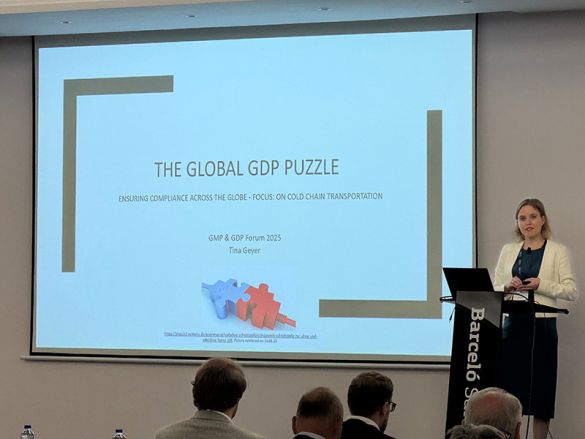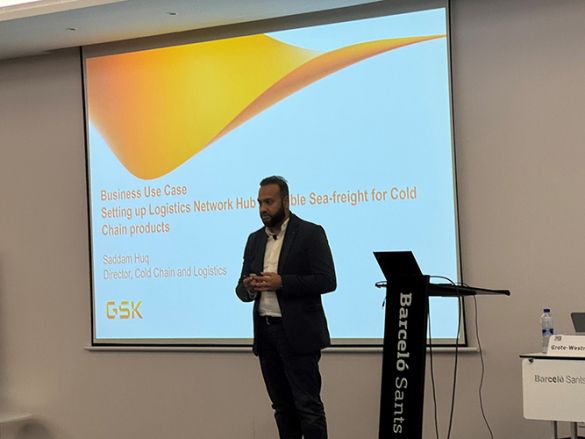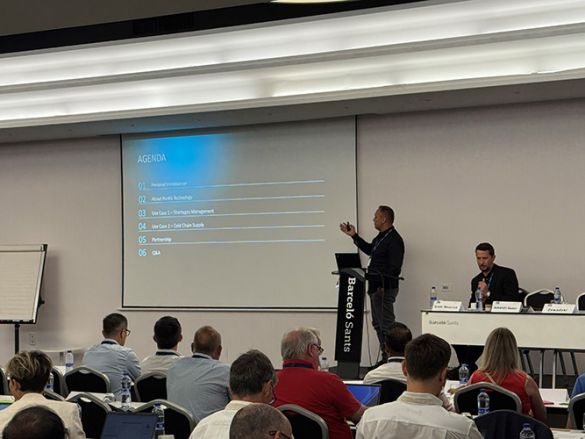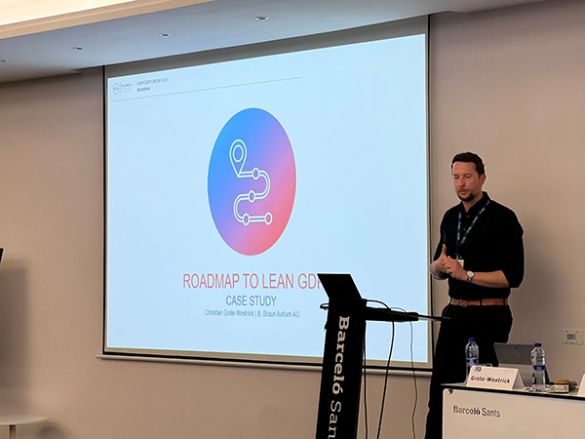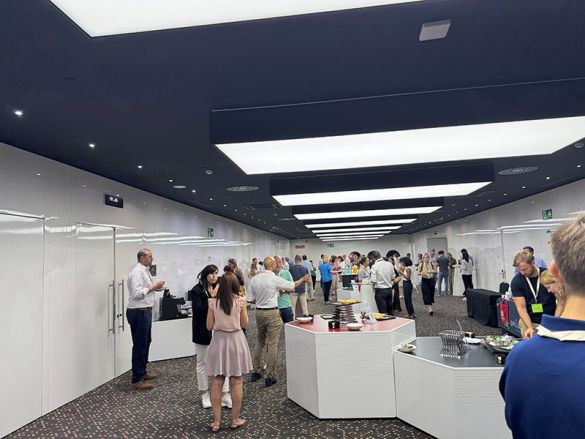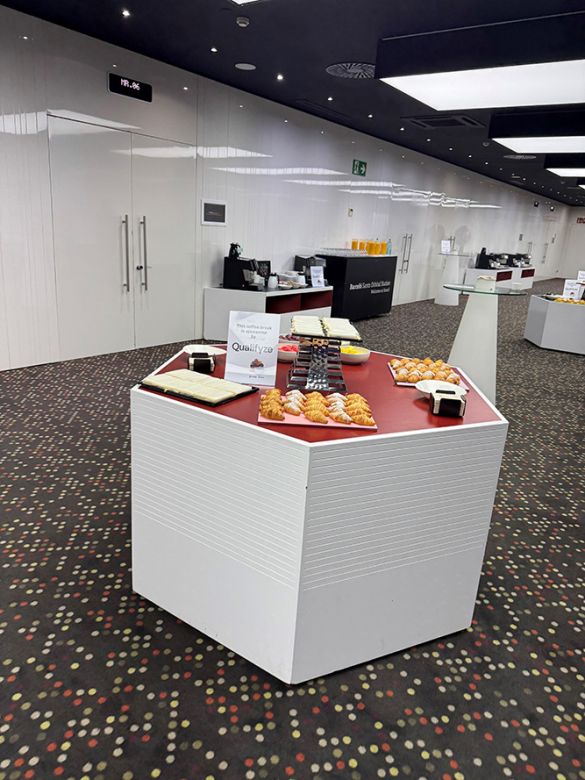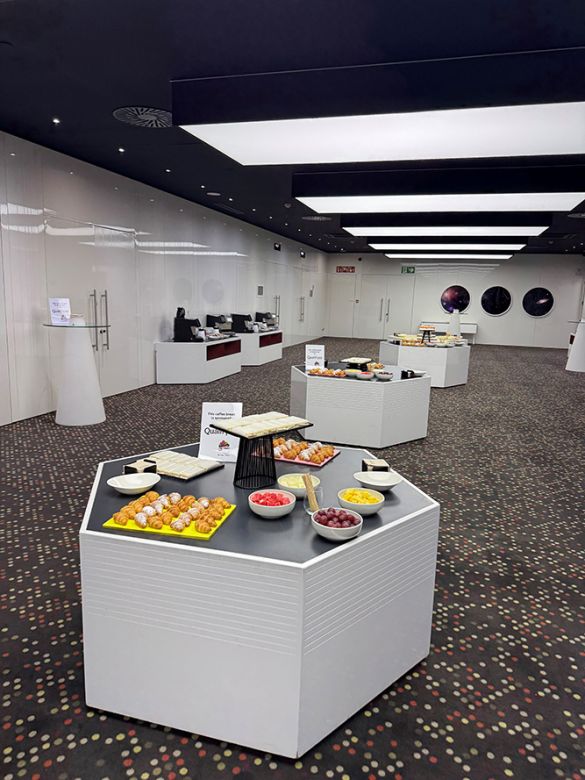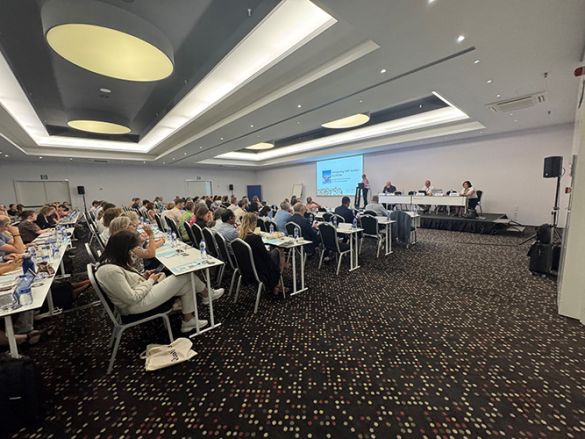
Conference Reports 2025
Please click on the following titles to read more about the last GMP & GDP Forum in Barcelona:
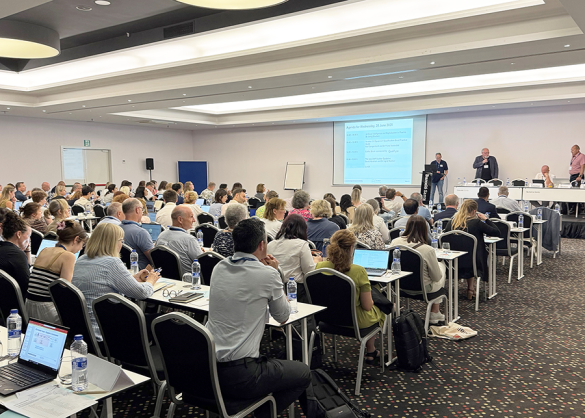
This year’s European GMP & GDP Forum took place from 24–26 June 2025 in Barcelona. The first one and a half days focused on GMP-related topics, while the following one and a half days were dedicated to recent developments in Good Distribution Practice (GDP). Participants had the option to attend either the GMP Forum, the GDP Forum, or all three days of the event.
The GMP Forum, which commenced on 24 June 2025, aimed to provide an overview of current GMP developments in the EU and the USA. The first day was chaired by David Cockburn, member of the European Compliance Academy (ECA) Executive Board. To open the Forum, Dr Afshin Hosseiny, Chair of the ECA Executive Board, provided an update on the overall development of the ECA as well as on the progress of its various Interest and Working Groups. His conclusion: with more than 4,000 members, the ECA is a key stakeholder in the GMP environment.
The first highlight followed shortly thereafter: Brendan Cuddy, Lead Scientific Officer at the EMA, delivered his presentation “Update on Inspections, MRAs and Work Plan”. Among other topics, he reported on the Quality Innovation Group (QIG), which is currently working on two guidelines addressing decentralised manufacturing and 3D printing. Even more noteworthy was his preview of the forthcoming revisions to GMP regulations. There are significant changes underway….
Building on Brendan Cuddy’s presentation, Dr Ulrich Kissel, member of the ECA Executive Board and Chair of the European QP Association (EQPA), presented an industry perspective titled “Update on European GMP Regulations – Outlook”. He illustrated the complexity of today’s regulatory framework for medicinal product manufacturing in Europe and what is to come.
He also highlighted developments in the field of veterinary medicinal products and referred to numerous EMA Q&A documents related to Annexes 1, 8, and 16, as well as to GDP.
Another key session was the joint presentation by Danish inspector Ib Alstrup, who is leading the revision of Annex 11 and the drafting of the new Annex 22 on artificial intelligence. He was joined by Dr Wolfgang Schumacher, Chair of the ECA IT Group. Ib emphasised that the draft documents for both annexes have been reviewed in coordination with the involved inspector working groups and are now with the European Commission for legal review. Publication is expected in September 2025. He began his presentation by showing that all GxP areas (GLP, GCP, GMP, GVP) include provisions on IT security. He then gave an overview of the draft contents of the revised Annex 11 and new Annex 22.
As expected, Dr Wolfgang Schumacher responded critically, analysing the concept paper for the Annex 11 revision and the currently available information on Annex 22. His presentation, titled “Pain Points and Industry Expectations”, opened with a general industry sentiment regarding new regulations: “Validation should become easier and faster” and “There should be a recipe for validation”. He demonstrated, using comparisons between the current Annex 11 and the concept paper, that this is unlikely to be the case. Regarding the use of artificial intelligence, he envisioned “King Kong fighting Cyber Godzilla”. His industry perspective was widely echoed by the audience.
After the lunch break, Dr Peer Schmidt from AbbVie presented “ICH Q9 Training Package – An Overview”, introducing the newly developed ICH Q9 training materials. As a member of the group that revised the ICH Q9 Guideline, he was ideally placed to explain the new aspects of the revision and their inclusion in the training package. At the outset, he noted that the original ICH Q8, Q9, and Q10 training materials had been updated with ten new slide sets, as had the Q&A document related to these guidelines. Still pending are the training modules for Annex 1 of the ICH Q9 (R1) Guideline (“Tools and Methods”) and Annex 2 (“Applications”), each comprising nine slide sets. All slide decks are expected to be published in September.
He went on to outline the main changes compared to the previous version of ICH Q9 and used the new training slides to illustrate the application of:
- Hazard identification instead of risk identification
- Managing subjectivity
- Addressing formality
- Making risk-based decisions
- Managing medicinal product availability
- Conducting risk reviews
Dr Ulrich Kissel then returned to explore a particularly nuanced topic: Global Functions in Pharma Large Organisations and EU GMP – A Critical Discussion. He effectively highlighted the challenges encountered during audits, especially between global quality assurance structures, local Qualified Persons (QPs), and contractors. One attendee commented spontaneously that she had encountered the same issues.
Dr Hosseiny concluded the first day with a unifying message: "We all have the same goal – patient safety". A bus tour of Barcelona’s key sights and a group dinner in the old town provided further opportunities for professional exchange.
The second day began with Dr Jörg Stüben from Boehringer Ingelheim discussing Artificial Intelligence and Digitalisation in Pharma. He started by engaging participants through Slido polls, then introduced different types of artificial intelligence and related (both specific and non-specific) guidelines. He expressed regret that the forthcoming Annex 22 on artificial intelligence will exclude large language models and generative AI. In response, Ib Alstrup, as head of the working group behind Annex 22, explained that this was only an initial draft and would be further developed. Using additional Slido polls, the audience was invited to vote on potential use cases for AI in research, pharmacovigilance, in-process controls (IPC), and batch release. He concluded his presentation with a slide of “food for thought”.
The morning concluded with two paired presentations. First, Ralf Gengenbach, Chair of the ECA Validation Group, and Dr Franz Schönfeld, GMP Inspector in Bavaria, presented the ECA Good Practice Guide: Qualification and Validation 3.0. Ralf Gengenbach began with an overview of the guide and what has changed in version 3.0 compared to version 2.2. The aim of the guide is to describe collaboration in equipment qualification between suppliers and customers. As early as 2005, an ISPE White Paper had promoted the inclusion of Good Engineering Practice (GEP) and cooperation between suppliers and customers – that was 20 years ago.
Using the example of the Devonport scandal in 1972, Franz Schönfeld illustrated which GMP principles could be derived from it (knowledge of equipment design, process and product understanding, risk management). He strongly recommended involving suppliers in equipment qualification, as they often possess greater expertise than the customer. Supplier-conducted testing does not necessarily need to be repeated by the customer. However, he also outlined the limitations of supplier involvement. Key factors to consider include:
- Off-the-shelf vs. custom-designed equipment
- Supplier experience and market position
- Effective integration of GEP
- But crucially:
The client retains ultimate responsibility
Ralf Gengenbach then offered practical suggestions on supplier integration. Beginning with product and process requirements, user requirements for equipment are defined. These then feed into planning, design, and construction—accompanied by risk management activities—with supplier expertise contributing throughout the process.
In the final presentation before the lunch break, David Abraham, Chair of the working group that developed the ECA GMP Auditor Guide, presented an overview of the guideline’s development and contents “Introducing GMP Auditor Guideline”. Building on this, Dr Ingrid Walther, member of the GMP Auditor Association, delved into the contents of the guideline. Dr Walther focused in particular on the audit report template contained within the guideline.
To conclude, she presented practical examples of challenging audit situations and possible solutions. This marked the end of the second day of the GMP Forum. After lunch, the GDP Forum commenced.
Conclusion: Accompanied by three exhibitors, the GMP Forum offered a platform to learn about regulatory developments in GMP and their practical implementation. Almost 160 participants and speakers from 24 countries made extensive use of this opportunity.
The GMP & GDP Forum takes place every two years. The next event is scheduled for June 2027.
About the author:
Sven Pommeranz has been with CONCEPT HEIDELBERG since 1996, where he serves as Operations Director, specialising in validation and medical devices.
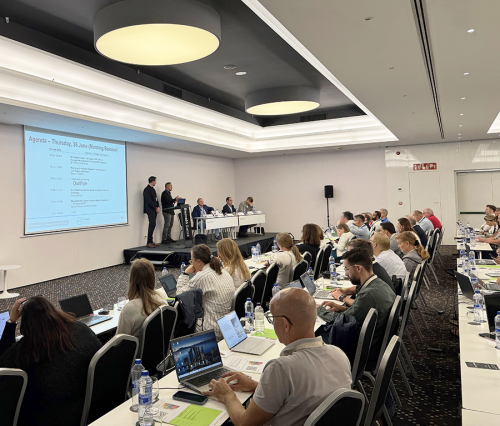
This year’s European GMP & GDP Forum took place from 24 to 26 June 2025 in Barcelona. The first one and a half days focused on GMP topics, while the following one and a half days were dedicated to current developments in Good Distribution Practice (GDP). Participants had the option to attend only the GMP Forum, only the GDP Forum, or all three days of the event.
The GDP Forum, which began on the afternoon of 25 June and continued on 26 June, concentrated on current challenges across the entire pharmaceutical supply chain. Speakers from regulatory authorities, industry, and consultancy shed light on key issues from various perspectives. Members of the European GDP Association (GDPA) Board were also actively involved in the Forum. The first day was moderated by Alfred Hunt, Chairman of the GDPA, who also delivered the opening address. On the second conference day, Dr Christian Grote-Westrick, GDPA Board member, guided attendees through the programme.
The topics presented ranged from regulatory updates, regulatory inspections, and resilience in times of crisis to technological innovations, automation, and digitalisation, as well as global logistics strategies and real-world experiences from Ukraine. In addition to the specialist presentations, the shared breaks and social event provided ample opportunity for personal exchange with colleagues from across Europe as well as with the speakers. The programme was complemented by three exhibitors who showcased their products and services in the break areas and were available to answer questions.
The afternoon of the first day began with a presentation by Alfred Hunt, Hunt Pharma Solutions Ltd, UK. Entitled “GDP Update & Outlook”, he provided an overview of current regulatory developments – including new Q&A documents issued by the European Commission, as well as updated guidelines and guidance relevant to GDP. He addressed the validity of GDP certificates and emphasised that renewal provisions may vary between Member States. He concluded his presentation by highlighting the ongoing GDPA survey on the implementation of GDP requirements, which had already seen participation from over 100 individuals by the time of the Forum.
Emil Schwan, Chief Pharmaceutical Inspector, Swedish Medical Products Agency, addressed the topic of regulatory inspections of Marketing Authorisation Holders (MAHs) in his presentation “Inspections of Marketing Authorisation Holders with regards to GDP and GMP”. He explained the role and responsibilities of the MAH in the supply chain, requirements for contracts, outsourced activities, and the issue of security within the supply chain.
Sue Mann, Sue Mann Consultancy Ltd, UK, focused her talk “Managing a GDP Inspection to Maximise the Chance of Success” on the optimal preparation and conduct of GDP inspections. She presented a practice-oriented inspection management approach that considered both organisational and communication aspects. Particular emphasis was placed on the importance of a central "backroom" and the role of the Responsible Person (RP) during inspections.
Dr Daniel Müller, Head of the GMP Inspectorate at the local competent authority for Baden-Württemberg in Tübingen, Germany and GMDP Inspector, compared the GDP regulations for human and veterinary medicinal products in his talk entitled “Human and Veterinary GDP Regulations within the EU – are they really the same?”. He demonstrated that although the wording differs, there are substantial overlaps in content. This was particularly evident in the nearly identical responsibilities of the Responsible Person in both sets of regulations.
Dr Martin Egger, CEO of Infrareal Holding GmbH & Co. KG and Pharmaserv GmbH, Germany, addressed current challenges in the global supply chain in his talk “Resilience in the Pharma Supply Chain”. He analysed root causes such as the consequences of COVID-19, geopolitical conflicts, and disruptions in logistics networks. As a response, he discussed EMA recommendations for strengthening resilience, including supplier diversification, safety stock strategies, and investments in warehouse capacity.
Oleksandra Bakhurynska, Quality Director, Farmsoft LLC, Ukraine, impressively described in her talk “GDP Challenges and Solutions in Ukraine's War-Torn Supply Chain” how her company strives to meet GDP requirements under the extremely challenging conditions of war. She reported, among other things, on improvised backup systems, flexible warehousing solutions, and simplified emergency procedures.
This concluded the lecture programme for the first conference day in the late afternoon. The evening began with a guided bus tour through summery Barcelona, giving participants a glimpse of the main sights of the Catalan capital. The social event, held over a joint dinner, offered further opportunities for networking in a relaxed setting. The discussions once again highlighted the vital role of in-person exchanges for knowledge and experience sharing within the GDP environment.
26 June marked the second day of the GDP Forum and the third and final day of the entire GMP & GDP Forum 2025. The day commenced with a presentation by Dr Torsten Schmidt-Bader, Managing Director, moveproTEC – compliance & innovation advisory, entitled “Distribution Control – the magic of KPI, QPI and management dashboards for reliable GDP transports”. He demonstrated how effective distribution control can be achieved through the targeted use of KPIs, quality performance indicators and dashboards. Using numerous practical examples, he illustrated how risks can be identified and mitigated through data-driven decision-making.
Mateusz Zawadzki, Product Manager Special Cargo Certifications, IATA, Croatia, presented IATA’s CEIV Pharma certification programme. In his talk “Pharma and Healthcare Shipment Transported by Air: CEIV Pharma certification”, he explained how consistent standards and training help to ensure quality in the air transport of pharmaceutical products. The focus was on mitigating risks to temperature-sensitive medicinal products through global harmonisation of processes and communication.
Aleksandar Raic, Global VP of AI at Bridgewest Group and Technology Board Member at Pontis Technology, Croatia, explored the use of Artificial Intelligence (AI) in pharmaceutical distribution in his talk “AI in Pharma Distribution: Navigating Opportunities and Challenges”. He presented concrete use cases, such as predicting supply shortages and temperature excursions in the cold chain. He showed how the Internet of Things (IoT), AI, and blockchain can be integrated in a global Cold Chain Control Tower to proactively manage risks.
Michael Fleischer, GDP Expert – Logistics Compliance, and Manuel Zollondz, CCPS – Cold Chain Project Solutions, Germany, discussed the transformation of quality assurance through automation in their presentation “Revolutionizing Quality Assurance through Automation – The Future of GDP”. They illustrated how Robotic Process Automation (RPA) and digital tools can make quality assurance more efficient and reliable. They particularly stressed the need for risk-based validation of these systems within the GDP context.
Tina Geyer, Director Cluster Quality – New Markets, BeiGene Germany GmbH, Germany, focused on global GDP compliance requirements for cold chain logistics in her presentation “The Global GDP Puzzle: Ensuring Compliance across the Globe”. She presented relevant regulatory foundations and illustrated them using specific examples of deviations and risks. Both active and passive cooling systems were introduced, with explanations of their suitability for maintaining prescribed temperature ranges.
Dr Christian Grote-Westrick, Head of Quality Assurance, Responsible Person for GDP, and Lead Auditor at B. Braun Avitum AG, Germany, presented a practice-driven approach to streamlining GDP processes under the title “Roadmap to LEAN GDP”. He introduced tools and checklists for digital document control, self-inspections, transport qualification, and risk assessment, demonstrating how they can contribute to continuous improvement.
The conference concluded with a presentation by Saddam Huq, Director Cold Chain and Logistics, GSK, UK. Under the title “Business Use Case: Setting up a Logistics Network Hub – to enable sea-freight”, he explained how GSK transitioned from air to sea transport. He described the technical, regulatory, and organisational prerequisites that needed to be fulfilled – from the qualification of sea containers and IT connectivity to final QP release at regional distribution centres.
Overall, the GDP Forum 2025 once again highlighted the wide-ranging requirements for a secure, regulatory-compliant, and efficient pharmaceutical supply chain. The specialist presentations, case studies, and technological insights reflected the growing complexity of global supply chains and the importance of robust, future-proof GDP systems.
The GMP & GDP Forum is held every two years. The next Forum is scheduled for June 2027.
About the author:
Dr Markus Funk has been with CONCEPT HEIDELBERG since October 2019, where he serves as Operations Director, specialising in GDP and analytics.
